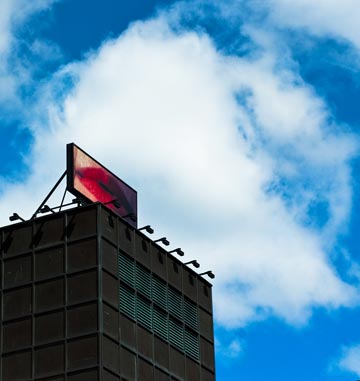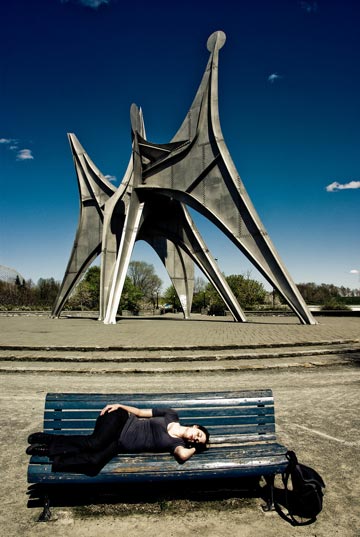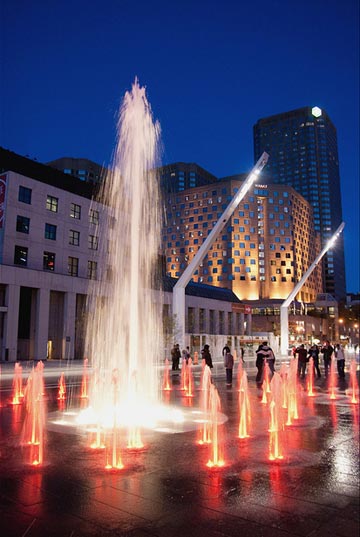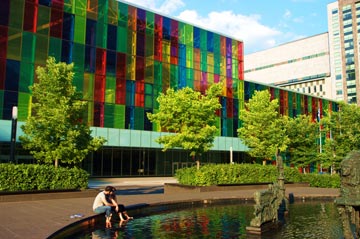[youtube:https://www.youtube.com/watch?v=ERbtF71JK9o]
Last August, Travel+Leisure ran the article Magnificent Montreal, in which Adam Sachs attempted to sum up Montreal, saying “it’s a college town, a dump, a city of art, placid parks, islands rigged for play and diversions, gray insular urban neighborhoods, and colorful suburbs. It is tiny by megacity standards but world-class in its weirdness, in its shifting, enduringly comfortable indigestibleness.” Many of the pronouncements are questionable – Montreal is hardly a dump (although it has some seedy areas) and its urban neighborhoods are neither gray nor insular (although they can be during our long frigid winters). Architectural historian François Dufaux, in that same article, aptly called Montreal “an imperfect America and improbable Europe.” Sachs does ultimately get it right in saying that the city defies classification.
In my conversations with the 8 artists I’ve written about in this series, Montreal shines in its vibrancy as a city that both fosters artistic production and encourages a great lifestyle. This city, with its slightly tumultuous history of linguistic divide, seems to be entering a time where there is a more effortless mélange of English and French. There is also a richness to the city because of its tight-knit integration of ethnicities (in Canada, the diversity metaphor isn’t so much a melting pot as a tapestry). Vida Simon summed it up best: “Montreal has such an inspiring texture, unlike anywhere else.”
There is a spirit to Montreal, a jouissance to life in the city often called the Paris of North America (although it also garners comparisons to Boston, Berlin, New Orleans…). Because of its diversity — linguistic and ethnic — a more liberal and tolerant attitude filters through the demeanor of Montreal’s citizens. This openness translates to the arts, as Cindy Poremba of Kokoromi Collective expressed, “people here seem to be much more open to seeing art of different types. They are willing to try things and get involved.” On the whole, there seems to be an interest and investment in the arts.

Geneviève Cadieux, "La voie lactée," billboard-sized image, 1991. Image perched on the roof of the Musée d'art contemporain de Montréal. Photo courtesy of Michel Beaulne.
And Montreal is indeed, as Sachs says, a city of art. The resources here for artists – from a multitude of galleries (both commercial and artist-run) to affordable studio spaces, from art magazines to interesting groups and collectives – encourage exploration and production. Montreal itself has over 20 artist-run centers. The existence of the Society for Arts and Technology only highlights the great interest in Montreal for playing with sound, technology, and art and bridging different media. Montreal is a hotspot for several different artistic scenes: from music to contemporary dance, from theatre to writing. Funding exists on both the provincial and national level to fund artistic endeavors, and the city of Montreal shows a certain commitment to celebrating the arts. There is an intellectual and cultural richness to this city; art is what makes this city thrive.
While all this description seems positive and optimistic, reality doesn’t always shine as bright (especially not in winter). Although there is a general openness towards the arts in Montreal, more can be done. While artists have the energy to create innovative projects and inspire intellectual engagement, Yves Médam points out that leadership needs to also step up to the plate in order for the arts to truly thrive in this city. “Montreal deserves politicians who have vision, who have ambitions and goals, who want to take risks with regards to the arts. It’s a city that deserves to have panache.”

Alexander Calder, "L'Homme," stainless steel sculpture, 1967. A massive sculpture commissioned for the opening of Expo 67 and Montreal's 325th birthday, Calder's creation (located in Parc Jean Drapeau) now serves as the anchor for Piknic Electronik, a weekly outdoor dance party featuring electronic music and world-class DJs. Photo courtesy of Quentin Vantieghem.
Montreal’s Expo67, for Rafael Lozano-Hemmer, was when Montreal was in its heyday. “Nothing compares to what was being done then, the dedication to experimentation and the amount of resources allotted to a vision of a cosmopolitan society back then was world class,” he notes. Arguably, a lot of Montreal’s momentum was lost to English-French tensions and the surge of the separatist movement in the 70s (artistic, economic, and architectural spheres all hit a long-term snag). Montreal has lagged in its recognition of its producing artists, Lozano-Hemmer points out. Very influential artists like Philip Guston and Jack Goldstein, to name but two, don’t get celebrated, albeit acknowledged, nearly enough for their Montreal origins.
Lozano-Hemmer himself rarely exhibits in Montreal, feeling that going global and leaving the country is simply the reality for Montreal-based artists in order to achieve success. Perhaps leaving the city and traveling is symptomatic of the art world in which we currently live. The world has become more accessible with advances in transportation and technology and it is not uncommon for artists to share their work globally.

The fountain in Montreal's Place des Festivals in the Quartier des Spectacles is the largest programmable fountain in Canada (and currently features a nightly multimedia show by Moment Factory). This area functions as a fountain when it is not host to one of Montreal's multiple summer festivals. The city is currently revitalizing and creating the Quartier des Spectacles, an area of town with a high concentration of artistic venues around Place des Arts. Photo courtesy of Nancy Falso.
Canada’s government has failed to acknowledge this new reality, falling short in promoting the international recognition of Canadian artists. Prime Minister Stephen Harper recently made major cuts to arts funding and, specifically, to funds meant for artists bringing their work abroad. Lozano-Hemmer, pointing to Australia as a commendable example of supporting its artists globally, underlines the fact that artists these days need to go abroad to promote their careers and their national heritage.
In Montreal, the recognition of the arts as a vital fabric of the city shows signs of needing to be more fiercely protected. The landscape of the city, right now, is changing. Vida Simon and Jenny Schade both echoed the reality that condominiums are sprouting up where artists used to have their studios. Montreal needs to be careful in ascertaining its creative life force.

Place Jean-Paul Riopelle, bordered by the colourful Palais des congrès de Montreal, features the late artist's sculpture/fountain La Joute (relocated from the Parc Olympique), which is intermittently animated with fog and fire in the summer months. Photo courtesy of Pascal Poggi.
Hopefully, Montreal will remain a healthy center of artistic production and experimentation. Perhaps, with a little more coverage and recognition, those in power will also realize the city’s unique artistic energy and preserve and encourage its evolution through continued and increased support of institutions and artists.
Special thanks to all the participating artists for their time and good work, Daniel Baylis for his help finding illustrations for MontreART from Michel Beaulne, Quentin Vantieghem, Nancy Falso and Pascal Poggi, and to Chris ‘Zeke’ Hand for encouraging me to apply to be a guest blogger with Art21.



